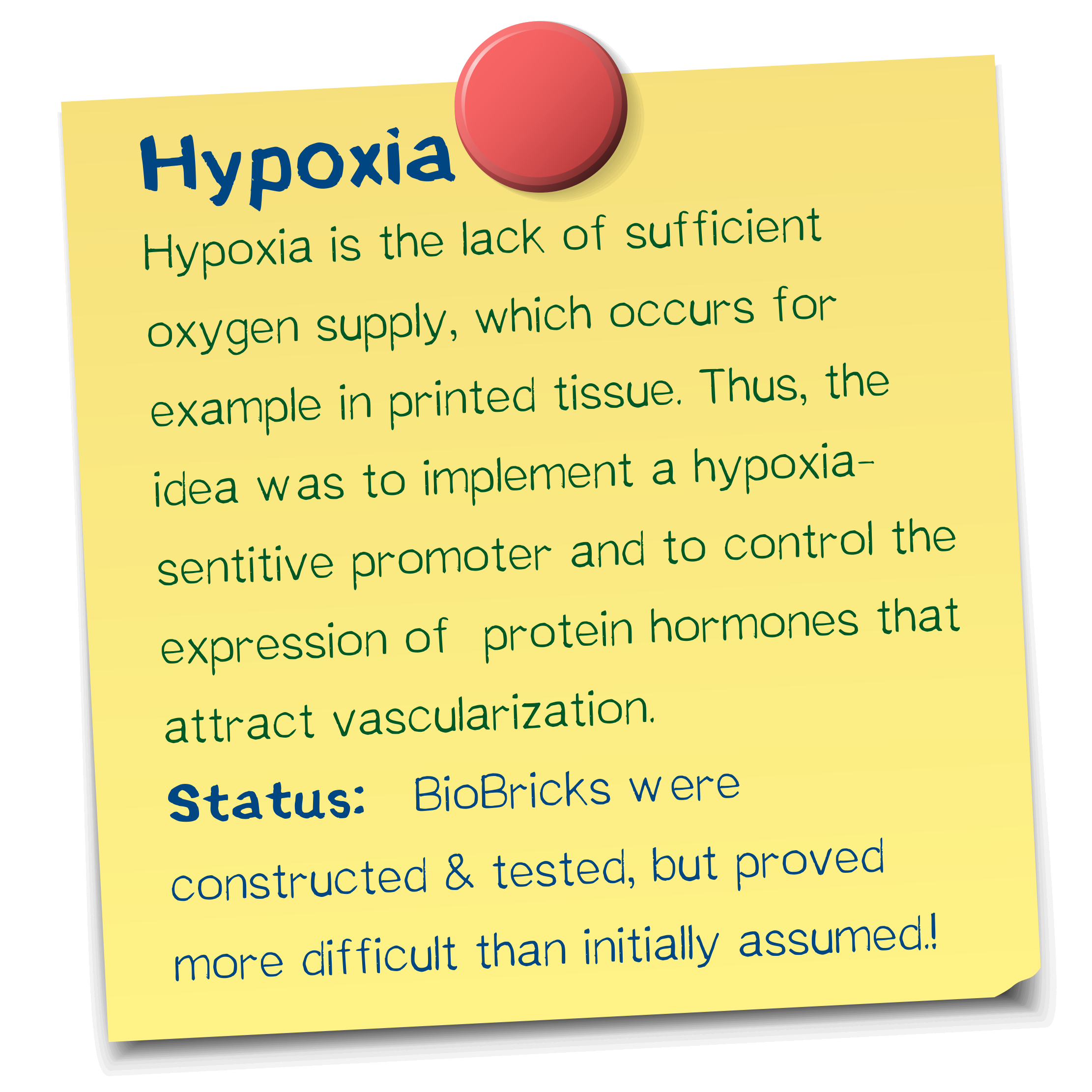(→Results) |
(→Fighting hypoxia in printed tissue) |
||
| Line 11: | Line 11: | ||
Herein lies one of the main challenges of bioprinting approaches. | Herein lies one of the main challenges of bioprinting approaches. | ||
| − | When printing, the homogenous delivery of oxygen to three-dimensional cell-constructs is limited by diffusion gradients in tissue from the periphery towards the center <ref>Volkmer, Elias, et al. "Hypoxia in static and dynamic 3D culture systems for tissue engineering of bone." Tissue Engineering Part A 14.8 (2008): 1331-1340.<\ref>, thus resulting in tissue hypoxia <ref>Höckel, Michael, and Peter Vaupel. "Tumor hypoxia: definitions and current clinical, biologic, and molecular aspects." Journal of the National Cancer Institute 93.4 (2001): 266-276.<\ref>. | + | When printing, the homogenous delivery of oxygen to three-dimensional cell-constructs is limited by diffusion gradients in tissue from the periphery towards the center <ref> Volkmer, Elias, et al. "Hypoxia in static and dynamic 3D culture systems for tissue engineering of bone." Tissue Engineering Part A 14.8 (2008): 1331-1340. <\ref>, thus resulting in tissue hypoxia <ref> Höckel, Michael, and Peter Vaupel. "Tumor hypoxia: definitions and current clinical, biologic, and molecular aspects." Journal of the National Cancer Institute 93.4 (2001): 266-276. <\ref>. |
In our bodies, this need for oxygen supply is met by blood vessels, which form extensive networks that nurture all tissues. As a result, capillaries grow and regress in healthy tissues according to functional demands. Thereby, no metabolically active tissue in the body is more than a few hundred micrometers from a blood capillary, which is formed by the process of angiogenesis. (4) | In our bodies, this need for oxygen supply is met by blood vessels, which form extensive networks that nurture all tissues. As a result, capillaries grow and regress in healthy tissues according to functional demands. Thereby, no metabolically active tissue in the body is more than a few hundred micrometers from a blood capillary, which is formed by the process of angiogenesis. (4) | ||
Revision as of 22:26, 18 October 2016
Seitenverantwortliche/r: Elena
Fighting hypoxia in printed tissue
Unicellular organisms such as bacteria posses the ability to reproduce very quickly, when given the right conditions such as warmth, moisture and suitable nutrients [1] and enter an inactive state when these are limited. On the contrary, most multicellular systems depend on a steady, adequate supply of oxygen and nutrients essential for their survival and metabolic stability.
Herein lies one of the main challenges of bioprinting approaches.
When printing, the homogenous delivery of oxygen to three-dimensional cell-constructs is limited by diffusion gradients in tissue from the periphery towards the center Cite error: Closing</ref> missing for <ref> tag- ↑ http://www.bbc.co.uk/schools/gcsebitesize/science/triple_ocr_gateway/beyond_the_microscope/understanding_microbes/revision/2/



